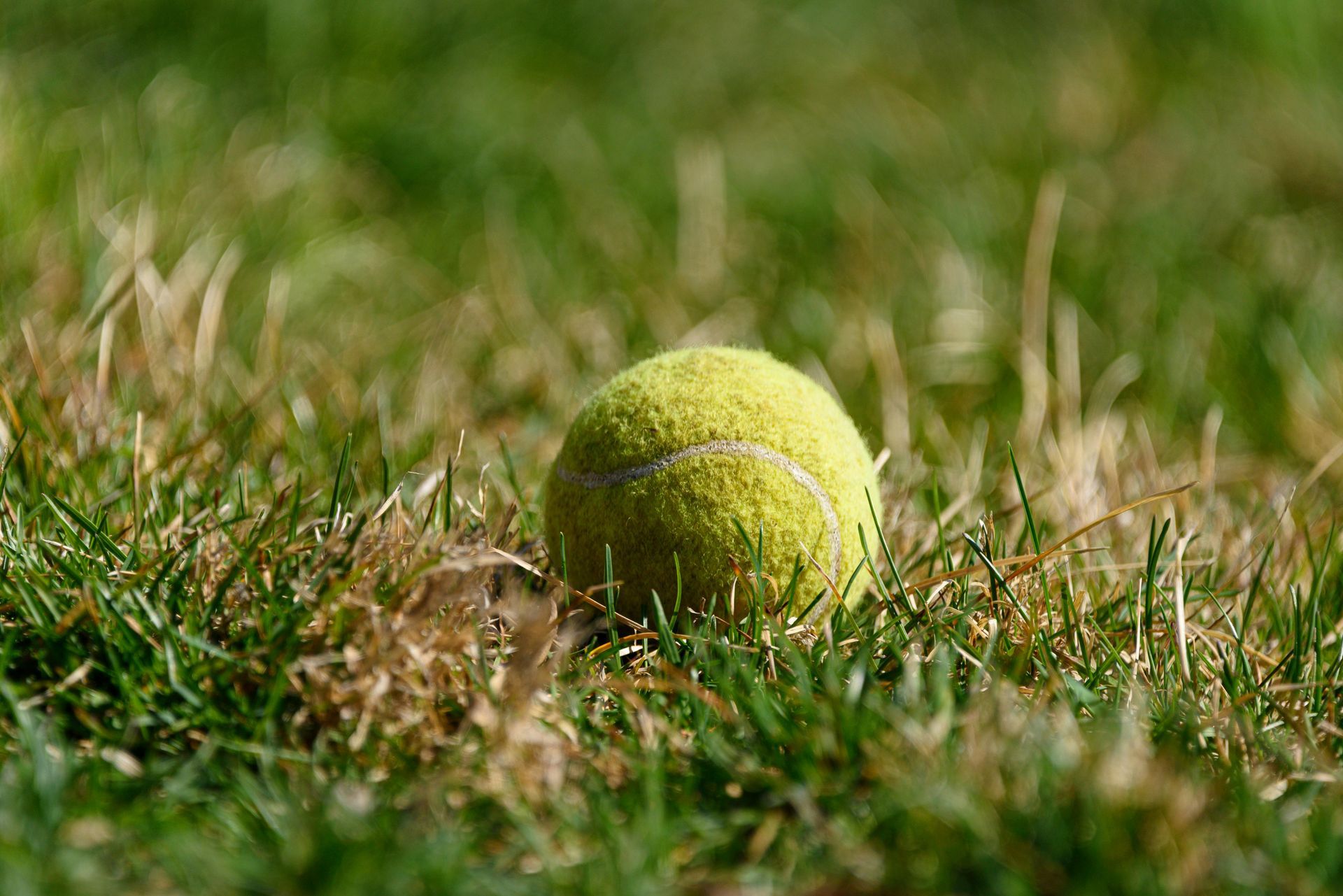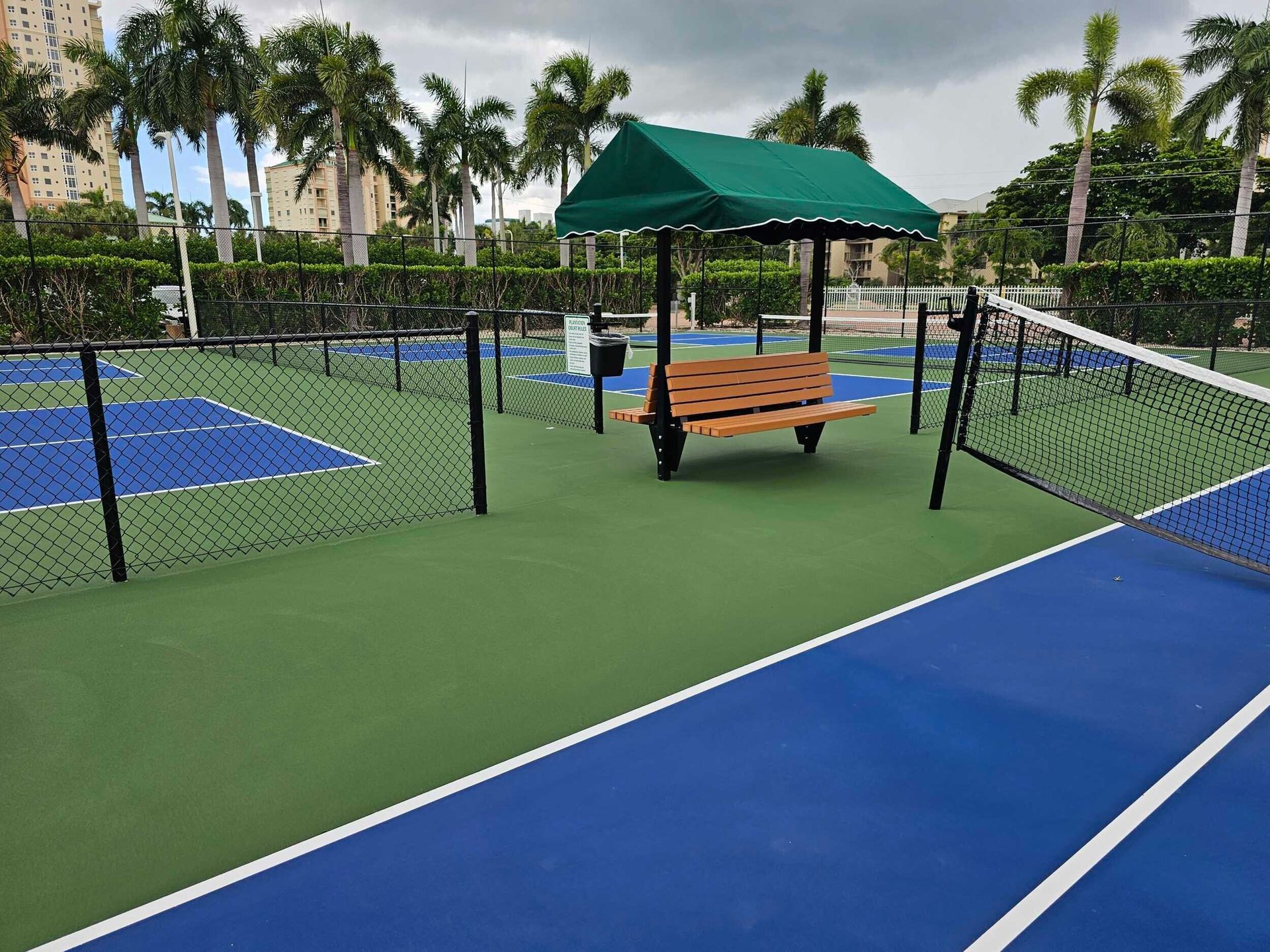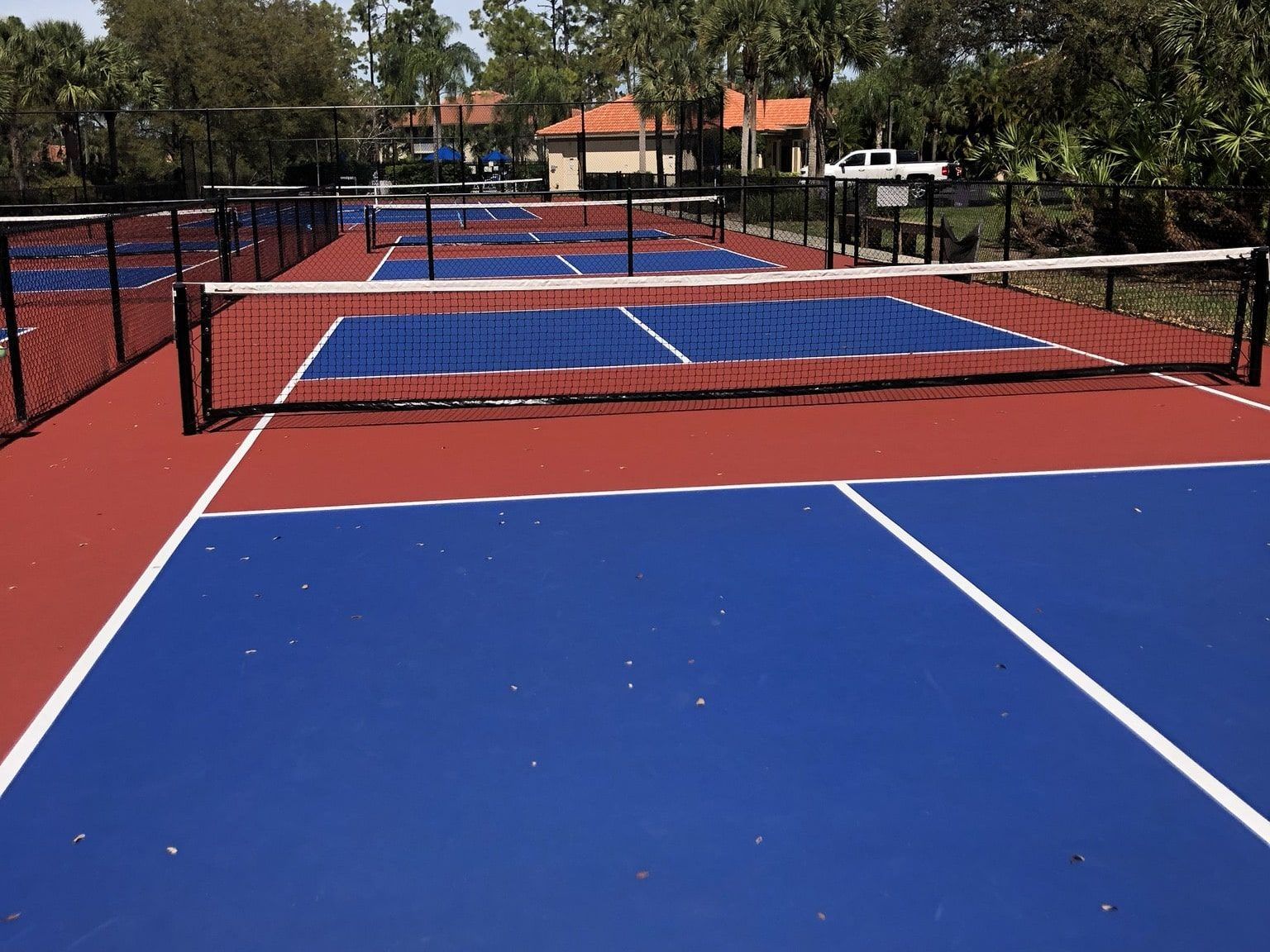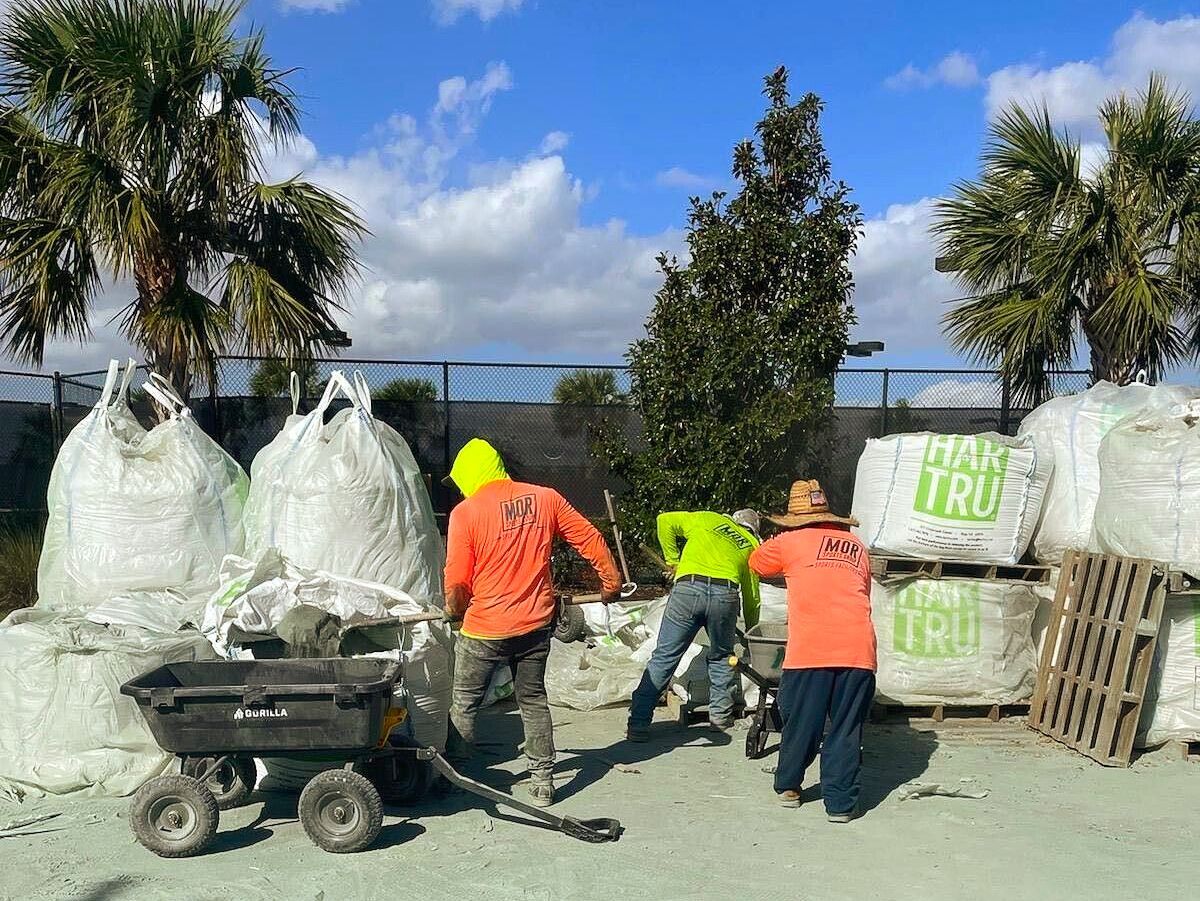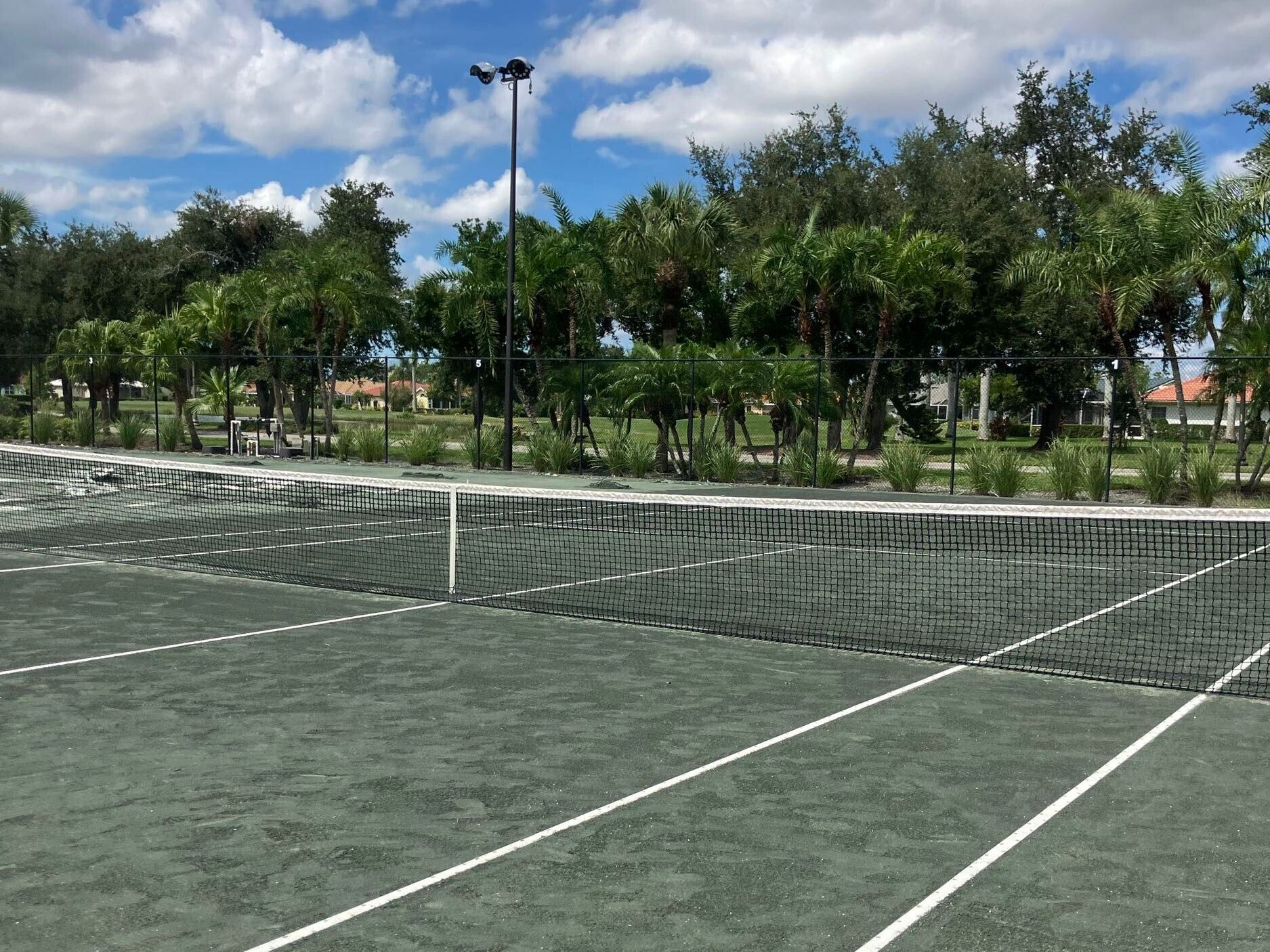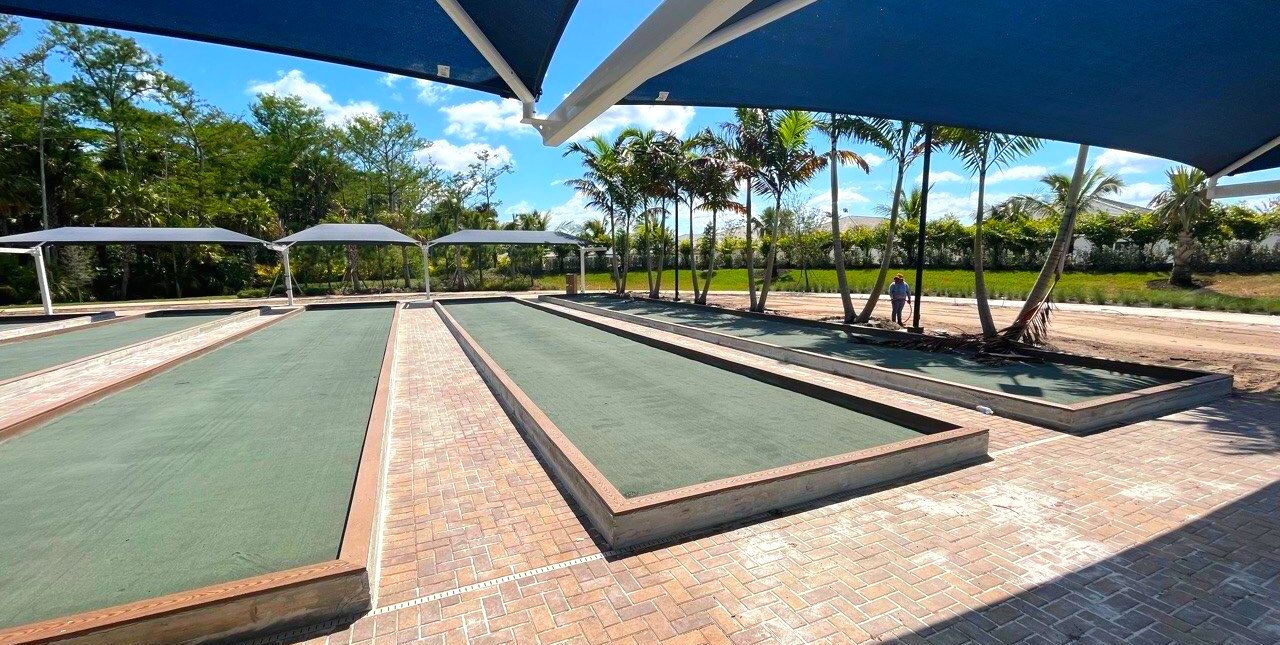Master Your Clay Court: Annual Maintenance Guide
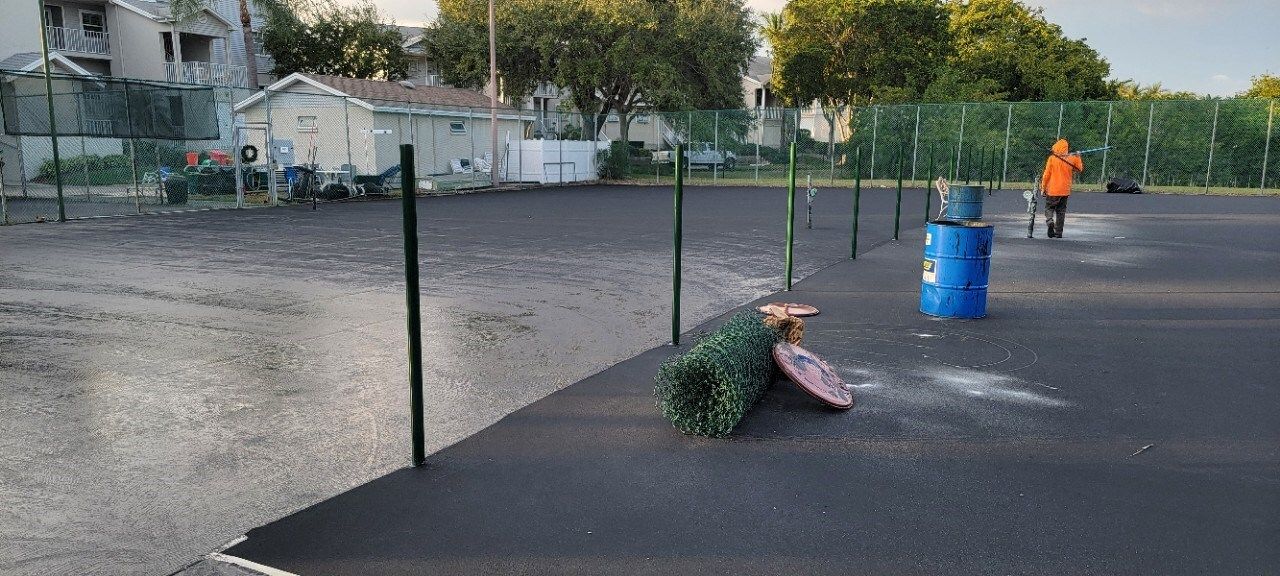
Taking care of a clay tennis court is essential to keep it performing at its best. This guide will help you navigate the steps for maintaining your clay court each year. Whether you’re managing a club court or a private one, these tips ensure your court stays durable, safe, and fun to play on.
Why Annual Maintenance Matters for Clay Courts
Clay courts are cherished for their distinct playing characteristics, offering a soft surface that minimizes joint stress and fosters strategic gameplay. But these benefits come with a caveat—consistent maintenance is critical. Annual maintenance not only preserves the court's unique qualities but also ensures safety, extends its lifespan and saves money in the long run.
Preserving Surface Quality and Playability
Clay courts provide a unique playing experience with slower ball speeds and high bounce consistency. These qualities depend on the court's surface being even and stable. Regular annual upkeep helps maintain these features by addressing common issues such as debris accumulation and uneven surfaces.
- Debris Management: Debris like leaves, dirt, or twigs can create uneven spots, affecting ball bounce and gameplay. Removing these regularly keeps the surface consistent.
- Leveling the Court: Over time, play and weather can cause dips and ridges. Annual maintenance ensures the surface is smoothed out, providing players with an even, predictable game.
- Safety First: Without proper care, clay courts can become slippery or uneven, increasing the risk of injuries. Maintaining the surface ensures a safe playing environment.
Extending the Lifespan of Your Clay Court
A well-maintained clay court can stay in excellent condition for decades if minor issues are addressed promptly. Rain, wind, and regular play gradually wear away the clay surface, making erosion prevention essential. Annual top dressing replenishes lost material, preserving the court’s structural integrity. Rolling the court regularly also helps prevent over-compaction, which can lead to cracks or poor drainage. These steps ensure the court remains stable, functional, and enjoyable for players.
Small depressions or cracks should be repaired as soon as they appear, as ignoring these imperfections can result in costly, extensive repairs. Proactively addressing these issues saves both time and money while preventing major disruptions. By committing to regular maintenance, court owners can avoid the high costs and downtime associated with restoration, ensuring their investment continues to deliver long-term value.
Avoiding Costly Repairs Through Preventive Care
Preventive care is the cornerstone of efficient clay court maintenance. Simple tasks like managing water flow and debris removal can prevent expensive repairs down the line.
- Water Management: Pooled water is one of the most common causes of clay court damage. It weakens the clay, causing uneven surfaces and erosion. Ensuring proper drainage and leveling low spots eliminates this issue.
- Damage Prevention: Annual maintenance tasks like deep cleaning and top-dressing protect the court from wear and tear, which can otherwise lead to costly surface restoration.
- Monitoring Changes: By inspecting the court regularly, you can identify issues like moss growth, cracks, or improper drainage before they escalate.
Essential Annual Clay Court Maintenance Tasks
Annual maintenance for clay courts goes beyond basic cleaning. It involves targeted actions that maintain the court's structural integrity, enhance its playability, and ensure long-term durability. By addressing deeper issues and focusing on thorough upkeep, you create a playing surface that stays safe, consistent, and enjoyable year-round. Below is a step-by-step guide to help you achieve optimal results.
Deep Cleaning and Surface Inspection
An annual deep clean is essential to clear debris, prepare the court for inspection, and address potential issues before they escalate. To ensure your court is thoroughly cleaned and ready for play, follow these steps:
- Sweep the Surface Thoroughly: Use a specialized clay court broom to remove dirt, leaves, and loose material. Focus on areas where play and weather conditions cause buildup, such as baselines and court edges.
- Inspect for Cracks and Low Spots: Carefully examine the court for cracks or depressions that could hold water and weaken the surface. Early identification of these issues helps prevent expensive repairs later.
- Manage Moss and Algae Growth: Check shaded areas or edges for moss or algae, as these can create slippery surfaces and degrade the clay. Use a court-safe moss remover to tackle these problems efficiently.
By incorporating these steps, you prevent small issues from escalating and keep the court in optimal condition for play.
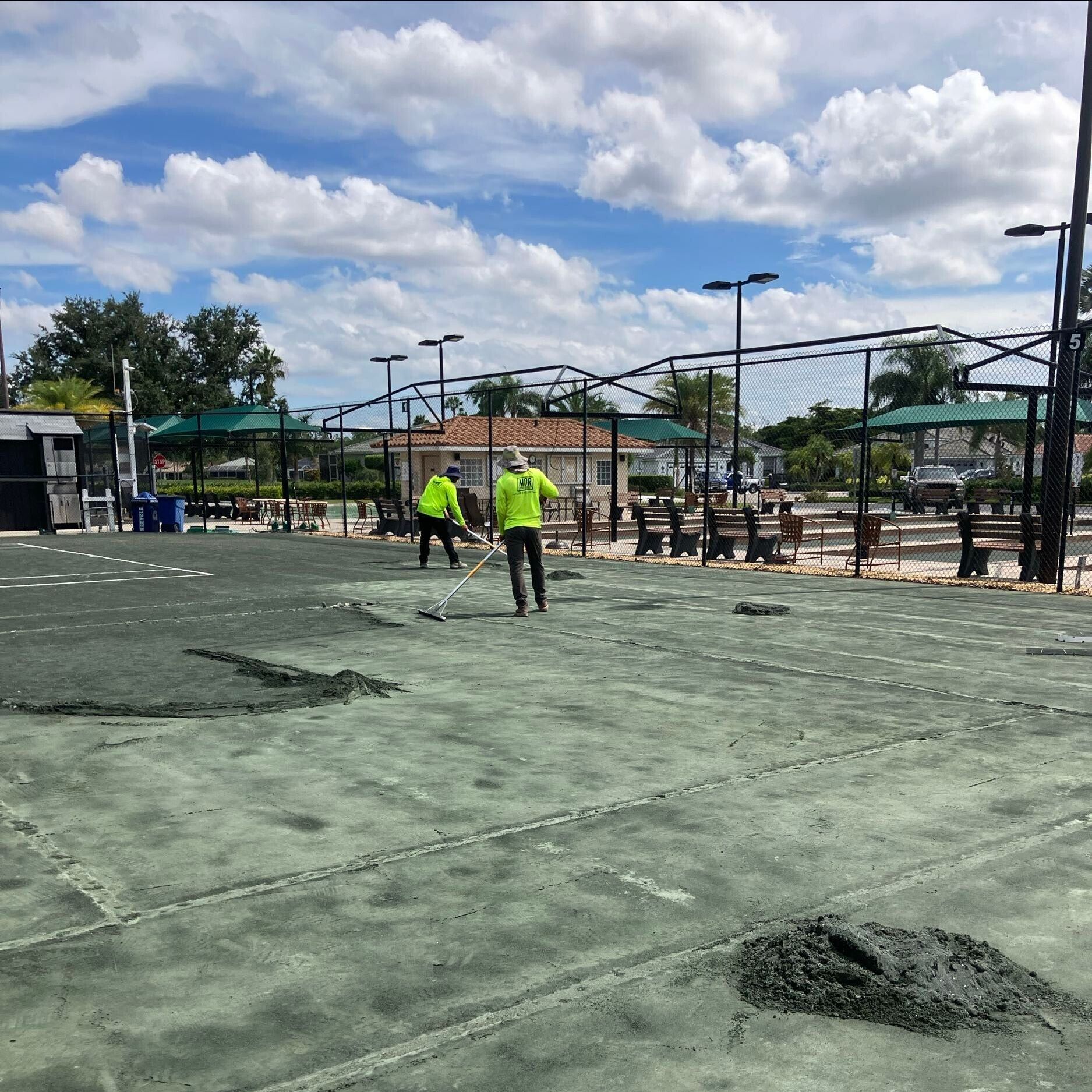
Top-Dressing for Surface Renewal
Top-dressing not only rejuvenates the court’s appearance but also ensures it provides a reliable and smooth playing experience. It is a crucial annual task that refreshes the surface and enhances gameplay. It also involves applying a fresh layer of clay to improve the court’s texture and restore its performance. Here’s how to do it:
- Distribute New Clay Evenly: Use a hand spreader or rake to layer fresh clay across the entire surface. Pay extra attention to high-play zones like baselines and service boxes, which wear down more quickly.
- Compact the Surface: Rolling the court after applying clay is essential to bind the new material with the existing layer. This step prevents loose material from shifting during play and ensures consistent ball bounce.
- Choose High-Quality Clay: Materials like HydroBlend or Coarse Blend are specifically designed for clay courts, offering better moisture retention and durability.
Aeration and Deep Grooming
To maintain proper drainage and prevent compaction, aeration and grooming are vital components of clay court maintenance. Follow these steps to keep your court level and functional:
- Loosen Compacted Clay: Use a scarifier or a grooming rake to aerate the surface. This process improves water drainage and prevents the surface from becoming too hard.
- Redistribute Clay Evenly: After aerating, brush the court with a drag broom to smooth out inconsistencies and fill in low spots. Proper redistribution of clay creates a uniform playing area.
- Roll for Stability: Rolling the court after grooming locks the clay in place, ensuring a firm surface that provides optimal traction and ball response.
Additional Annual Maintenance Tips
While the above tasks are essential, there are additional actions you can take further to enhance your clay court's performance and durability. Consider the following:
- Replace Line Tapes: Check and refresh worn or faded line tapes. Clear markings are vital for accuracy during play.
- Trim Perimeter Vegetation: Overgrown plants or roots can encroach on the court and cause structural damage. Regularly trimming the edges keeps the area clean and secure.
- Inspect Water Systems: A functioning sprinkler or hose system is key to keeping the clay hydrated. Address leaks or clogs to ensure even coverage and proper moisture levels.
Seasonal Maintenance Tips for Optimal Performance
Seasonal changes can affect your clay court’s condition, making moisture management and surface care essential. Water the court early in the morning or evening to minimize evaporation and allow the clay to absorb moisture deeply. A sprinkler system helps ensure even hydration, but overwatering should be avoided to prevent puddles and erosion.
Rolling and maintaining clear markings are equally important for optimal performance. A weekly roll compacts the clay, preventing shifting and ensuring consistent ball bounce. Start from the center and roll outward for uniform coverage. Use a line scrub brush to remove clay build-up and keep markings visible, ensuring accurate gameplay and a polished appearance. These seasonal practices will keep your court safe, stable, and ready for play all year.
Tools and Materials You’ll Need for Maintenance
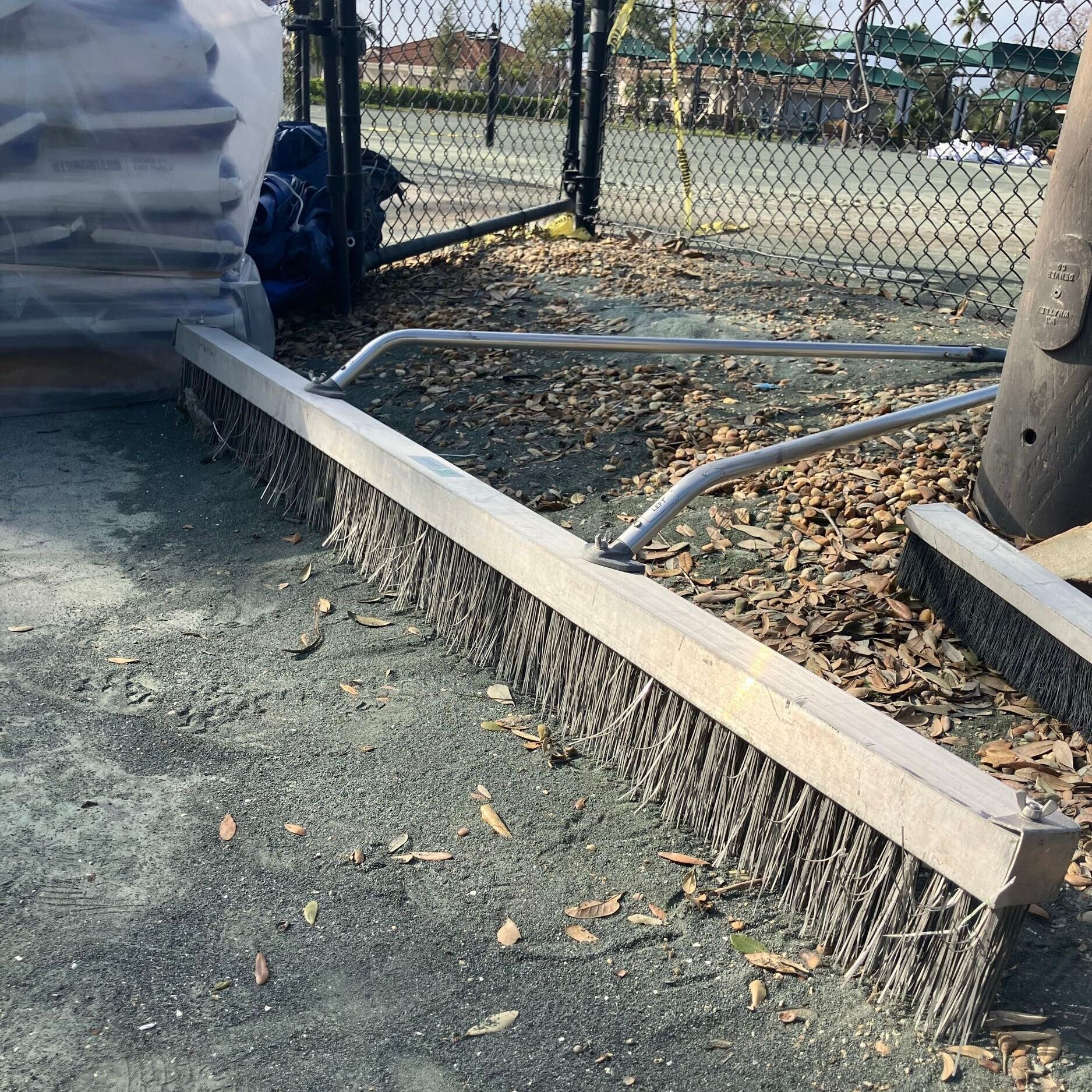
The right tools make a big difference in maintaining a clay court. Whether it’s a simple broom or specialized equipment, having the right gear saves time and effort. The must-have brushes, rollers, and tools for clay court maintenance are:
- Clay Court Brushes: For daily and deep cleaning.
- Line Scrub Brushes: Keep markings clear.
- Rollers: Compact the surface; choose hand or tow rollers for your needs.
- Scarifiers: Loosen compacted clay during aeration.
- Hoses and Sprinklers: Ensure even watering.
Investing in high-quality tools is essential to ensure efficient maintenance and long-lasting results. Using the proper equipment not only saves time but also helps achieve professional-grade care, keeping your court in peak condition. Make sure to inspect your tools regularly and replace worn-out items to maintain their effectiveness. Having the right gear on hand simplifies the process and ensures the best outcomes for your clay court.
Signs It’s Time to Call a Professional
While regular maintenance is essential for keeping a clay court in good shape, there are times when professional expertise is required. Recognizing the signs early can save you time, effort, and costly repairs in the long run.
Persistent Drainage and Structural Issues
Drainage problems, such as water pooling on the surface or shifting clay, often point to deeper structural concerns. These issues can lead to uneven surfaces and long-term damage if not addressed promptly. Professionals can assess the court’s slope and drainage systems, identifying and resolving root causes to restore proper functionality and prevent further complications.
Cracks and Uneven Surfaces
Visible cracks, low spots, or an uneven playing surface are clear indicators that your court requires professional attention. If routine tasks like brushing and rolling fail to resolve these issues, resurfacing may be necessary. Addressing these problems early ensures your court remains safe, playable, and durable for years to come.
Get Expert Help
While brushing, rolling, and watering is manageable for most court owners, tasks like top-dressing, laser-tapered resurfacing, and major repairs demand specialized equipment and expertise. Professionals can deliver precision results, extending the life and performance of your court.
For trusted professional care, Mor Sports Group offers expert services, including drainage solutions, resurfacing, and comprehensive inspections. Their experience ensures your clay court remains in peak condition, providing a safe and high-quality surface for every match. With their deep understanding of clay court dynamics and advanced maintenance techniques, Mor Sports Group is uniquely equipped to tackle complex issues that go beyond routine care. Their reliable services help protect your investment, ensuring your court remains a premium playing surface for years to come.
Conclusion
A well-maintained clay court offers more than just a great playing experience. It ensures safety, extends the court’s lifespan, and saves money by preventing costly repairs. By following this guide and committing to annual care, you’re investing in the enjoyment and durability of your court. These steps will surely keep your surface ready for countless matches to come.

